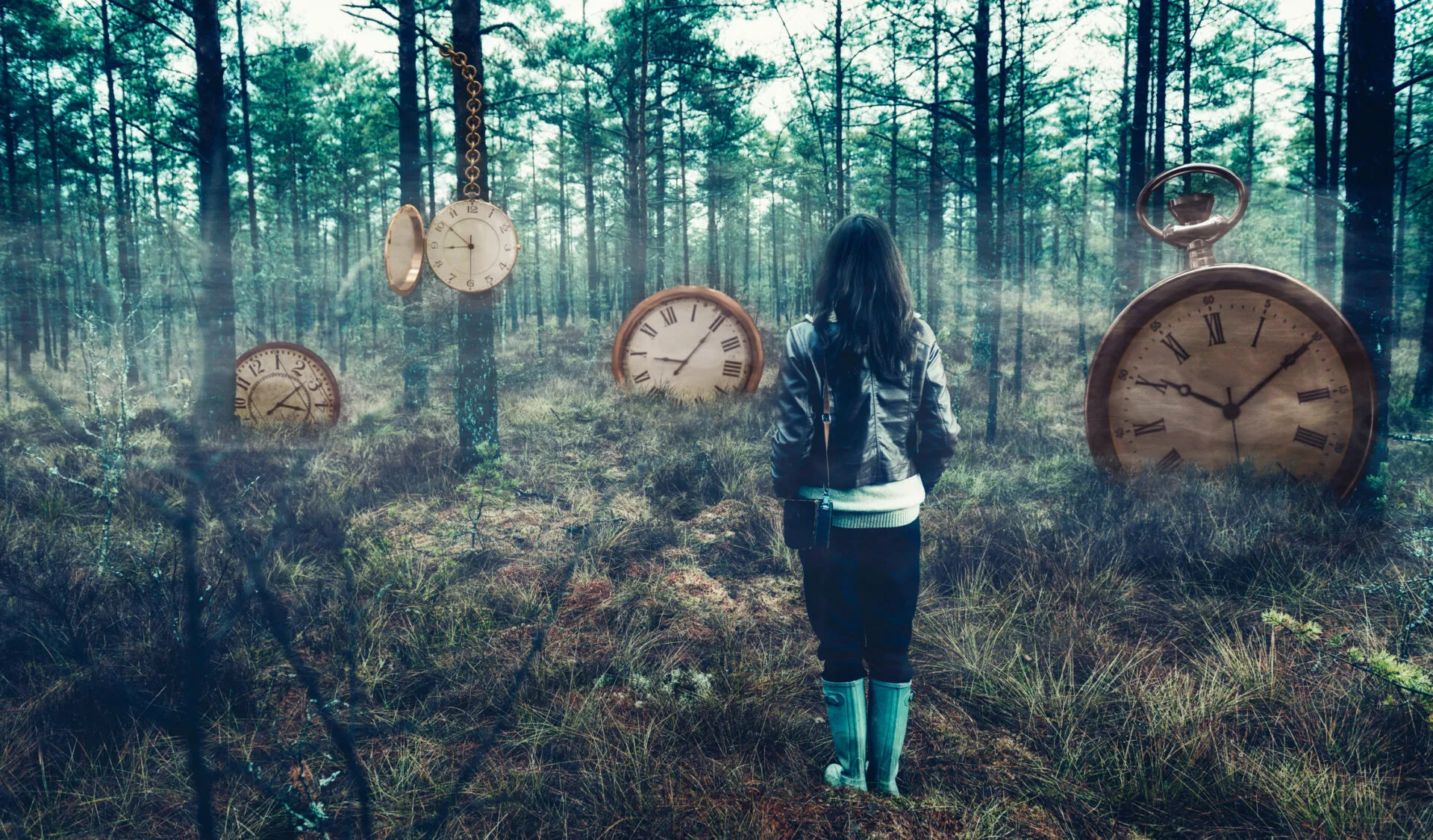By Maria Haskins
I grew up in northern Sweden, and even though I’ve lived over half of my life in Canada by now, I still miss the summer nights up there. These are the nights in late June and July when the evening sky turns a sheer, luminous shade of blue, infused with a transparent light that lingers through midnight into dawn. To quote Finnish writer and artist Tove Jansson: “The sun had set, but now in June there was of course no darkness at night to speak of. The night was pale and dreamy and full of magic.”
For me, there’s a landscape that goes with that light and those nights. It’s the landscape of places where I spent my childhood summers. Places near water, by a lake or inlet, near old wooden houses painted red with white trim around the windows, surrounded by woods of spruce and pine, and at the shadowy forest’s edge: birch, rowan, alder. On those nights, there’s a kind of bright silence that gathers around you, and in that stillness, it feels as if all sorts of old, hidden things might be watching from behind the trees, from the shadows underneath the rocks, and from the mirrored surface of the water.
In her book Swedish Gothic: Landscapes of Untamed Nature, Yvonne Leffler says that “Swedish Gothic is a highly place-focused version of Gothic, in which the Nordic landscape plays a central part and can be equated with a character in its own right. The Gothic terror is located in the Nordic wilderness and the monstrous other is often represented by nature beings from old myths, regional folklore, and popular beliefs.”
That importance of the landscape can also be felt in a lot of Nordic speculative fiction where nature, as well as folklore and fairytale, bleed into not only fantasy and horror, but into stories set in the present day, and into science fiction stories set in the near or far future.
An early example of Nordic gothic/dark speculative fiction is the work of Swedish author (and 1909 Nobel Prize winner) Selma Lagerlöf, including her short stories “A Manor House Tale” (“En herrgårdssägen”) from 1899 and “The Phantom Carriage” (“Körkarlen”) from 1912. From Denmark, there’s the short story collection Seven Gothic Tales by Isak Dinesen (AKA Karen Blixen) published in 1934, and from Finland, a great example is the werewolfish The Wolf’s Bride (Sudenmorsian) by Aino Kallas from 1928.
One outstanding Nordic writer who likes to skirt the lines between speculative fiction and so-called literary fiction, is Kerstin Ekman. She is perhaps best known for the novel (and TV series) Blackwater (Händelser vid vatten), about the repercussions of an unsolved double murder in a small Swedish community. While that book is more of a Nordic crime/noir story, her novel The Forest of Hours (Rövarna i Skuleskogen), about Skord, “a magical being who is neither man nor animal”, is most definitely speculative fiction and also my favorite book of hers.
When it comes to more recent Nordic speculative fiction, there’s a lot to choose from. In the fantasy genre, I highly recommend Finnish author Maria Turtschaninoff’s Red Abbey trilogy: Maresi, Naondel, and Maresi Red Mantle. The books are set in a matriarchal religious community and in interviews, Turtschaninoff has spoken about the influence of the landscape and history of Ostrobothnia, the Finnish coastal region where she grew up, on the worldbuilding in that series.
Nature has a strong presence in Nordic science fiction, too. There’s often the texture and feel of the natural world, of something organic and growing, even in these futuristic settings. One of the best examples of this might be the work of Swedish author Karin Tidbeck. That organic quality, and a distinguishing landscape feature heavily in Tidbeck’s novel Amatka, one of the most profoundly strange and unsettling science fiction novels I’ve read in recent years. You can feel that same organic quality in Tidbeck’s short fiction, for example “The Last Voyage of Skidbladnir”, “Sing”, and “Listen”, all available to read online.
A new Nordic science fiction novella to keep an eye out for is No One to Hold the Distant Dead by Swedish author K.L. Schroeder coming later this year from Psychopomp. It’s set in a future where Earth is waning, and where people’s minds and memories can be beamed to distant planets to take up residence in manufactured bodies. I’ve read an advance reading copy and it’s a beautifully haunting and quietly unsettling science fiction story. It might also be one of the few (only?) times I’ve seen my Swedish hometown Skellefteå mentioned in an sf book!
Other examples of Nordic science fiction include the sci-fi heist novel The Quantum Thief by Finnish author Hannu Rajaniemi, the sci-fi burlesque of Astro Truckers / Svålhålet by Mikael Niemi, and Åsa Avdic’s dystopian/thriller/mystery The Dying Game. Digging back to the earlier parts of the 20th century, there’s Karin Boye’s Kallocain, set in a strictly controlled surveillance society, and the space poem/opera Aniara by Harry Martinsson.
Nordic writers also shine in the horror genre and one of the best-known Nordic writers regardless of genre is probably John Ajvide Lindqvist with his brilliant vampire novel Let the Right One In. If you can get your mitts on his Lindqvist’s short story “Border” where the lore of trolls weaves its way into the present day, it is very much worth a read as well.
One of my favourite horror reads last year was The Night Guest by Icelandic writer Hildur Knútsdóttir, a story where sleepwalking, an absent sister, and the disappearance of several cats come together into a riveting, gutting, suspenseful tale. You can get a taste for Knútsdóttir’s darkly gleaming nightmarish visions in the short story “The Shape of Stones” where the past (literally) bleeds into the present and into the dreams of an explorer.
Other great examples of Nordic dark short fiction include Norwegian writer Remi Skytterstad’s story ”A Song Born” from Reckoning, set in Finnmark, Norway in 1695, and Elin Olausson’s darkly evocative “Naglfar” from Gamut.
Swedish writer Mats Strandberg is another very read-worthy author in the horror genre with titles like Blood Cruise (Färjan) and The Home (Hemmet). Together with author Sara B. Elfgren he also co-wrote the supernatural horror books in the Engelsfors trilogy (The Circle, Fire, and The Key) about a group of Swedish teenagers chosen to drive back the demons that threaten the world.
There’s more great Nordic dark fiction and horror to explore, including Swedish author Anders Fager’s short story collection Swedish Cults where Sweden is revealed as a sinister place where awful and unimaginable things happen; and Finnish author Johanna Sinisalo’s genre´-blending books, including The Blood of Angels and Troll – a Love Story. Next up on my own reading list is I Remember You by Icelandic author Yrsa Sigurdardottir, about three friends who are renovating a rundown house in a remote, isolated location and soon realize they are not as alone as they thought.
For visual representations of the dark or gothic Nordic speculative vibe, a prime example is surely Swedish artist Simon Stålenhag’s “retro-futuristic” work. His artwork served as the basis for the sci-fi series Tales From the Loop, and his graphic novel The Electric State, was adapted into a Netflix movie. When it comes to dark fantasy and folk-horror art, I love the oeuvre of Tómarúm, AKA Christine Linde. Her artwork depicts the old rural Swedish landscape, the darkness beneath the trees, the shadows gathered around old wooden buildings, and the ancient creatures, ghosts, and spirits that haunt those old places.
Ulla Thynell is another fabulous artist who creates beautiful and original Nordic fantasy art. Each one of her paintings feel like stories in their own right, and you can check out her work in the forthcoming art book Far Away Dreaming from Atthis Arts.
If you’re looking for more Nordic speculative fiction, you might want to check out the anthology Nordic Visions, edited by Margrét Helgadóttir. I’m definitely biased since the book includes one of my own short stories, but it does serve as an interesting introduction to a variety of Nordic speculative fiction writers.
Finally, I return to those haunting summer nights and to the work of Tove Jansson. She is mostly known for creating the Moomin family, of course, and her work isn’t usually classified as dark fiction, but to me, her writing encapsulates the feel of Nordic dark fiction in a way that has nothing to do with Moomin and everything to do with landscape and mood. In her work, I feel the presence of mysterious creatures and unknown forces moving in the woods, under the rocks, and on the sea beyond our ken, and it’s no surprise that her description of the end of the Scandinavian summer is pitch-perfect:
“Every year, the bright Scandinavian summer nights fade without anyone’s noticing. One evening in August you have an errand outdoors, and all of a sudden it’s pitch-black. It is still summer, but the summer is no longer alive.”

